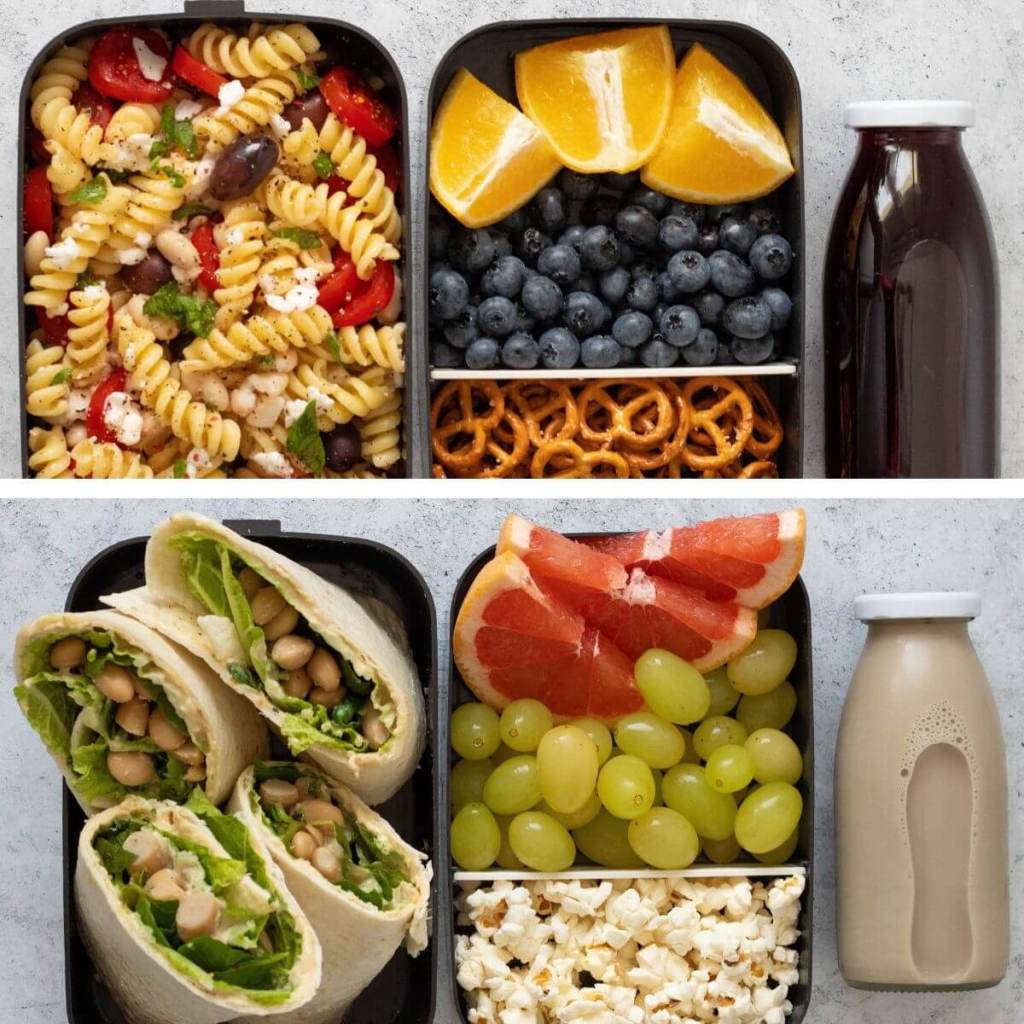1. Focus on Whole, Unprocessed Foods
Make the foundation of your diet naturally plant-based foods such as fruits, vegetables, whole grains, legumes, and nuts/seeds rather than processed junk food and vegan replacements like mock meats. This will not only benefit your overall health, but also help keep you more satisfied and full because of the fiber and nutrient density. It will also help with motivation to stay vegan because

2. Plan Ahead
Maybe you have a busy schedule and don’t have time to make complicated recipes, or find yourself in a social situation with no healthy vegan options. Planning ahead will ensure you always have nourishing, healthy meals and prevent you from getting overly hungry and making irrational food choices. Meal prepping is a convenient strategy to ensure fast, easy meals. This does not necessarily mean you have to prep entire meals, but can also simply mean you prep different components such as roasted vegetables, brown rice, and baked tofu, then put those components together however you choose at meal times, which would allow for variety and more exciting meals. In addition, before eating out, you could look at the menu beforehand and determine if there are healthy vegan options to choose from. If you don’t see any, you could always eat beforehand or bring your own food. (Although it is perfectly fine to treat yourself once in a while as well).

3. Gradually Increase Fiber
On a Standard American Diet (SAD), most people fail to get the RDA for fiber, and switching to a plant-based diet can lead to a significant increase in fiber, as most whole plant foods are naturally high in fiber, while animal foods do not contain any. Fiber is essential for healthy digestion, satiety, and a healthy gut microbiome, but those who aren’t used to a high fiber diet may experience uncomfortable gas and bloating if they up their intake too suddenly.

4. Create Balanced Meals
Having balanced meals or a balanced diet as a whole will ensure you hit all your macro and micronutrient targets and prevent deficiencies, as well as help keep you satisfied. This entails consuming adequate amounts of carbs, protein, and fat, and “eating the rainbow” from a wide variety of different food sources. Make sure to also take a B12 supplement, as this is a nutrient that cannot be consumed from food on a vegan diet.

5. Educate Yourself
Find books, videos, or articles online on topics related to veganism such as its impacts on the environment and human health, and how to optimize nutrition.

6. Learn to Cook
Knowing how to cook easy and delicious vegan meals will make it so much easier to stay vegan, and will also likely save you money. Find recipes and inspiration from the internet, Youtube, Pinterest, and social media platforms such as Instagram and Tik Tok to branch out of your comfort zone and keep your meals interesting.

In addition, here are some kitchen staples I recommend for a healthy plant-based diet:
Blender/Food Processor
I highly recommend investing in a blender or food processor, and it is something that I personally use once or twice nearly every day. Having a blender or food processor is essential for making smoothies, nut butters, nondairy milks, nut-based creams and cheeses, hummus, blended soups, and more.
Air Fryer
Not absolutely essential, but an air fryer is key to achieving perfectly cooked foods with a crispy texture and well cooked interior without the need for any oil. If you are a fan of french fries, the air fryer is the perfect tool for you! I also love to use the air fryer for tofu, breakfast potatoes, and sweet potato wedges.
Beans
Beans are a great source of plant-based protein, complex carbs, and fiber. They are also known to have a “second meal effect”, meaning that they regulate the glycemic response of both a current and following meal, and keep you satiated for longer. Beans are great in hummus, stews, Mexican dishes like burritos, Indian dishes like Dahl and Chana masala, chili, lentil bolognese, and more. Both canned and dry beans are perfectly fine, but canned beans are more convenient.
Tofu
Tofu is a nutritious source of complete protein (contains all 9 essential amino acids) that is also high in antioxidants, healthy fats, iron, B vitamins, magnesium, manganese, phosphorus, and calcium. Tofu is a key component in many Asian dishes such as stir fries and stews, and can also be used to make dishes such as tofu scrambles (like egg scrambles), tofu “egg” salad, and as a meat replacement.
Nondairy Milk
Try experimenting with the wide variety of nondairy milks on the market, including almond, cashew, oat, coconut, flax, hemp, walnut, pistachio, black sesame, pecan, pea protein, and soy. I recommend getting a milk made from only whole food ingredients without the addition of added sugars or additives like guar gum and carrageenan.
Nuts/Seeds & Nut Butters
Nuts and seeds are a great source of healthy fats, containing beneficial unsaturated fats and Omega-3 fatty acids that contribute to satiation. Research also suggests that nuts and seeds can improve heart health and cholesterol levels. In addition to on their own, they can be blended into vegan creams, sauces, milks, and cheeses, added to smoothies, used as an egg substitute in baking (for chia seeds and flaxseeds), ground into flour, and more. Nut/seed butters can also be spread onto toast or used as an oil substitute in baking.
Avocados
The Avocado is another healthy fat source that is very popular food for many people, vegan or not, and adds a creamy element to dishes like avocado toast and Mexican dishes like burritos.
Whole Grains
Whole grains are a source of complex carbs filled with fiber, vitamins, antioxidants, trace minerals, and protein. They can be eaten in their whole form or in pastas, breads, pancakes/waffles, and more.
Potatoes & Sweet Potatoes
Potatoes and sweet potatoes are incredibly filling and relatively low calorie, with boiled potatoes ranked as the number one most filling food in the world. In addition, they offer many health benefits such as fiber, vitamin C, Vitamin A, and antioxidants. Try experimenting with different varieties such as russet gold, red, and purple potatoes, and orange, Japanese, Hannah white, and Hawaiian sweet potatoes.
maple syrup
Bananas
Bananas are so versatile and can be used in so many dishes, such as smoothies, as a breakfast topping,as a natural sweetener, as an egg replacement in baking when mashed, banana bread, and banana ice cream. They are a great source of potassium, energy, fiber, antioxidants, and Vitamin C, and are also great for digestion.
Fruits & Vegetables
Of course, fruits and vegetables as a whole are essential for optimal health on any diet. If you struggle to get enough produce into your diet, experiment with different cooking techniques such as roasting, steaming, air-frying, grilling, and boiling, and different dishes such as smoothies, salads, spiralized veggie noodles, blended into sauces, and cauliflower rice, and pizza crust. Flavorful seasonings can also make a world of difference.
Liquid Aminos/Coconut Aminos
Liquid aminos and coconut aminos are lower-sodium soy sauce alternatives that are great for boosting flavor, especially in Asian dishes that call for soy sauce.
Banana Blog Posts breakfast carbohydrates Dates dessert diabetes diet food Fruit greensmoothie groceryshopping grocerystore health healthy healthydiet healthyeating healthyfood healthyrecipe healthyrecipes kale market newyearsresolution nutrition pancakes plantbased plantbaseddiet potato Raw Recipe recipes Smoothie snack substitutions sugar sweetpotato traderjoes vegan vegandiet veganfood veganuary vegetarian waffles winter winterrecipe

Leave a comment